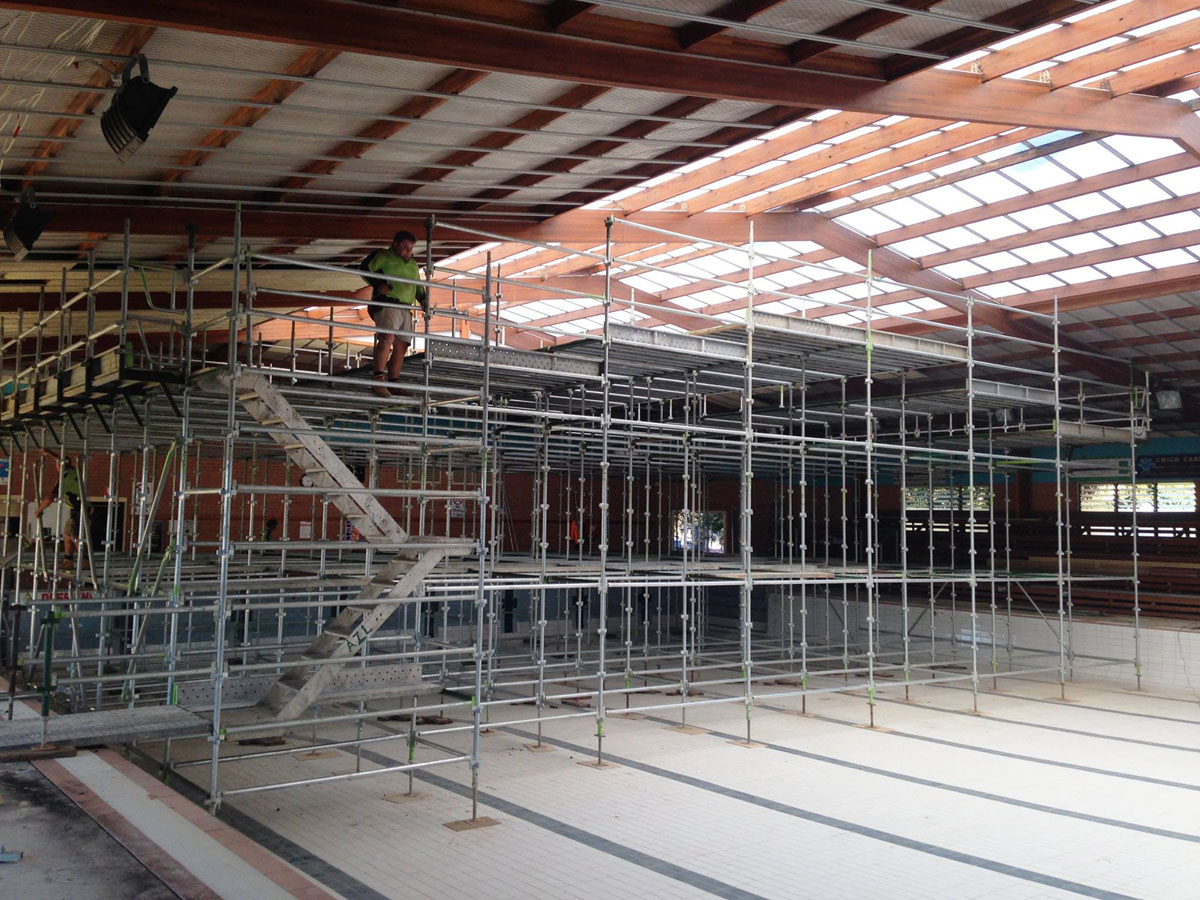In the fast-paced world of industrial construction, scaffolding holds a critical role in facilitating projects advance smoothly and in a safe manner. As the demands for taller structures and faster turnaround times rise, integrating effective scaffolding solutions into your project timeline becomes. Grasping what commercial scaffolding is and why is crucial to your project can lay the groundwork for better safety, compliance, and overall success.
In this article, we will dive into various aspects of commercial scaffolding, such as its varieties, safety benefits, and the significance of adhering with regulations. Whether you are organizing a large-scale construction project or a smaller renovation, having the suitable scaffolding system in positioned can significantly impact productivity and safety on the job site. From managing set-up times to comprehending permits and inspections, this guide will provide the information necessary for effective scaffolding integration into your project plan.
Understanding Corporate Scaffolding
Commercial scaffolding is a specialized system engineered to provide temporary support and access for construction projects. It is crucial for supporting work at height, ensuring that construction teams can securely reach multiple levels of a structure. This type of scaffolding is essential for a broad range of applications, from high-rise buildings and manufacturing sites to commercial spaces and public venues. Comprehending the specific demands of corporate projects allows organizations to opt for the right scaffolding solution that aligns with their unique needs.
There are several types of scaffolding used in commercial projects, each offering unique advantages based on the scale and type of the work. Some common types include modular scaffolding, framed scaffolding, and tube and clamp scaffolding. Each style is constructed to boost stability and safety, while also allowing for flexibility and easy installation on site. Knowing the differences between these scaffolding types can aid managers in deciding on the most suitable system for their particular environment.
As business construction continues to progress, the significance of scaffolding becomes increasingly important in meeting security and standardization requirements. Effective scaffold systems not only enhances construction site safety by providing secure access but also supports efficient workflows. It allows workers to operate at optimal levels, ultimately leading to on-time task delivery. By incorporating thorough scaffold systems solutions into the project timeline, companies can lessen risks and ensure that their commercial endeavors proceed smoothly.
Security and Compliance in Scaffolding
Ensuring safety and adherence in scaffold systems is essential for any business project. Following security regulations not only protects workers but also minimizes the chance of legal issues. The OSHA has established particular regulations that control scaffold use, including design criteria, load capacity, and instruction mandates. Adherence with these regulations demonstrates a dedication to creating a safe job site, which is vital for maintaining employee morale and efficiency.
To boost safety on scaffold systems, it is important to conduct regular inspections and maintenance. Employers should create a strong safety inspection protocol that assesses for potential hazards such as structural integrity, correct setup, and deterioration to components. These inspections should be logged to ensure traceability and to provide a clear record of safety protocols. Additionally, creating a climate of safety where employees feel empowered to report issues can significantly increase overall safety on the job site.

Education is a critical aspect of compliance that should not be ignored. All team members working on or around scaffold systems need to receive appropriate training that covers safety procedures, correct operation of equipment, and identification of hazards. This training not only helps in meeting legal requirements but also trains workers with the knowledge required to manage potential risks successfully. Offering comprehensive scaffold training ensures that personnel are equipped and reduces the likelihood of accidents, thereby strengthening the safety structure of the project.
Project Planning and Logistics
Effective project planning and logistics are critical in guaranteeing the effective integration of support structures into industrial construction projects. A thorough assessment of the site is required to determine the appropriate scaffolding system, taking into consideration elements such as site access, structural load limits, and the distinct requirements of the project. https://pagh-halsey.hubstack.net/a-closer-inspection-the-forms-of-business-scaffolding-present with construction managers and site supervisors can help tailor a scaffolding solution that meets both safety standards and project timelines. Additionally, having a plan for material delivery and equipment setup can lessen delays and disruptions on busy sites.
Coordination with multiple stakeholders is also critical during the planning phase. Communication between scaffolding crews, safety officers, and other trade professionals ensures that everyone is in sync on the project goals and timeline. This collaboration helps to foresee possible challenges, such as site constraints or scheduling conflicts, allowing for proactive solutions to be put in place. Specific roles and responsibilities should be established, ensuring that each team member knows their contributions to the overall project success.
Finally, managing scaffolding logistics involves careful scheduling of installation and removal operations to optimize workflow. This includes taking into account peak construction times, which can dictate when scaffolding setup occurs without impacting other trades. Utilizing modular scaffolding can streamline the process, allowing for quick assembly and disassembly. Tracking equipment usage and hiring timelines can also help to efficient project management, ultimately leading to cost savings and enhanced productivity on the job site.
